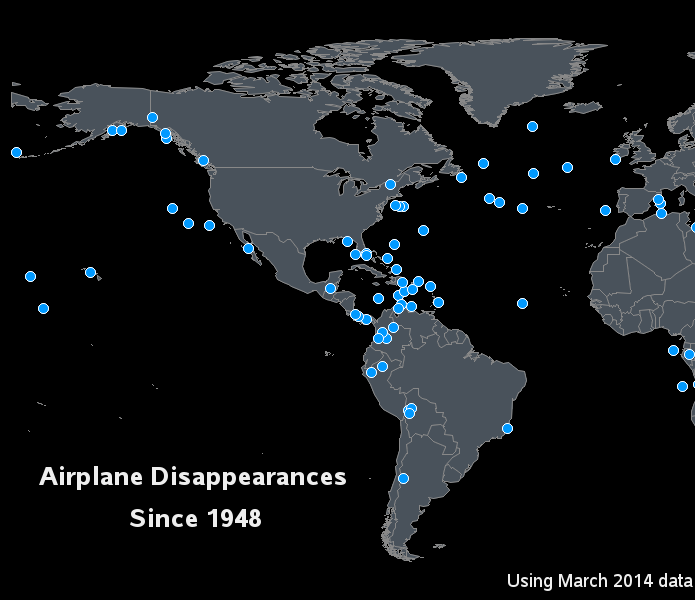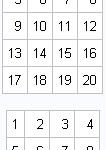All Posts

As teachers head into the madness of student course registration, the madness of college basketball reinforces a critical point: Data is crucial to making the picks that lead to a winning bracket, and student growth. Value-added assessment has proven reliable in determining which students are ready for their "one shining moment". This

“My goal is to constantly improve the quality and stability of our software while at the same time innovating,” said Vice President of SAS Resarch and Development Armistead Sapp yesterday at the SAS Global Forum Technology Connection. Hosted by Product Management Director Michele Eggers, the Technology Connection focused not only on

“Within ten to fifteen years, the typical US mall, unless it is completely reinvented, will be a historical anachronism—a sixty-year aberration that no longer meets the publics’ needs, the retailers’ needs, or the community’s needs.” So proclaimed Rick Caruso, founder and CEO of Caruso Affiliated, a retail/commercial real estate development
Well, if I were asked to name the most intriguing spot in the SAS Support and Demo Area, it would probably be The Catalyst Café sponsored by SAS R&D. This exciting new area at SAS Global Forum 2014 is aptly name: a informal meeting place dedicated to jump-starting ideas for

Today is American Diabetes Association Alert Day®: a one-day "wake-up call" to bring attention to the increasing prevalence of diabetes worldwide. Whether or not you have diabetes, today is a perfect time to step back and think about your current lifestyle and what you can do NOW to prevent or
I enjoy human kids. When I’m not working, they’re a lot of fun to be around. Recently, Ed had a speaking engagement with some local students who are visually impaired. They were competing in a contest known as the Braille Challenge, sponsored by the national Braille Institute. And, wow, these

In December, Kathy Council gave us the scoop on the consolidation of several divisions at SAS into a single organization focused on customer support. At this morning’s 2014 Technology Connection, Fritz Lehman, Vice President of SAS Customer Engagement and Support, shared his vision by responding to some of your requests

In my region of North Carolina (Raleigh, Durham, and Chapel Hill) one of the most anticipated times of the year has arrived— the NCAA basketball tournament. This is a great time of year for me, because I get to combine several of my passions. For those who don’t live among crazed college

With all the recent news reports about the missing Flight 370, I wondered what other airplanes have disappeared without a trace ... and I used SAS to visualize that data! There was in interesting infographic on the Bloomberg website that sort of answered my question, but their map just had

Fast jede zweite Flasche Wein wird in Deutschland beim Discounter gekauft, meldete gestern das Handelsblatt. Das sollte ein fulminantes Warnsignal für den Weinfachhandel und die Winzer mit Direktvermarktung sein! Discounter haben in den letzten Jahren ihr Sortiment stetig verfeinert - gerade durch hochwertigere Angebote, die sogar unter ausgemachten Weinkennern geschätzt werden.

Are retailers suffering a skills shortage when it comes to analytics? Nikki Baird from Retail Systems Research (RSR Group) offers some intriguing observations about the critical analytical talent shortage facing the retail industry in a recent article, “Where Have All the Data Scientists Gone? SAS Analyst Day Report Out.” Her observations

Yesterday, I was on a phone call with a disappointed SAS user who won't be attending SAS Global Forum 2014. Like many others, her organization is facing another year of reduced travel and conference budgets. While there's no substitute for attending in person, live webcasts from SAS Global Forum make

SAS administrators have a delicate balance to maintain. SAS users want to be happy and productive, and to be granted the freedom to use any techniques in their skill set to accomplish their work. But the Business (or Government or Research institution) wants their sensitive data to be protected, and

Last month I blogged about defining SAS/IML functions that have default parameter values. This language feature, which was introduced in SAS/IML 12.1, enables you to skip arguments when you call a user-defined function. The same technique enables you to define optional parameters. Inside the function, you can determine whether the

Learning. Sharing knowledge. Catching up with colleagues. My favorite part of attending SAS Global Forum is connecting with other SAS users from around the globe. SAS Global Forum 2014 is run for SAS users, by SAS users and all of the content presented at the event is from users like













